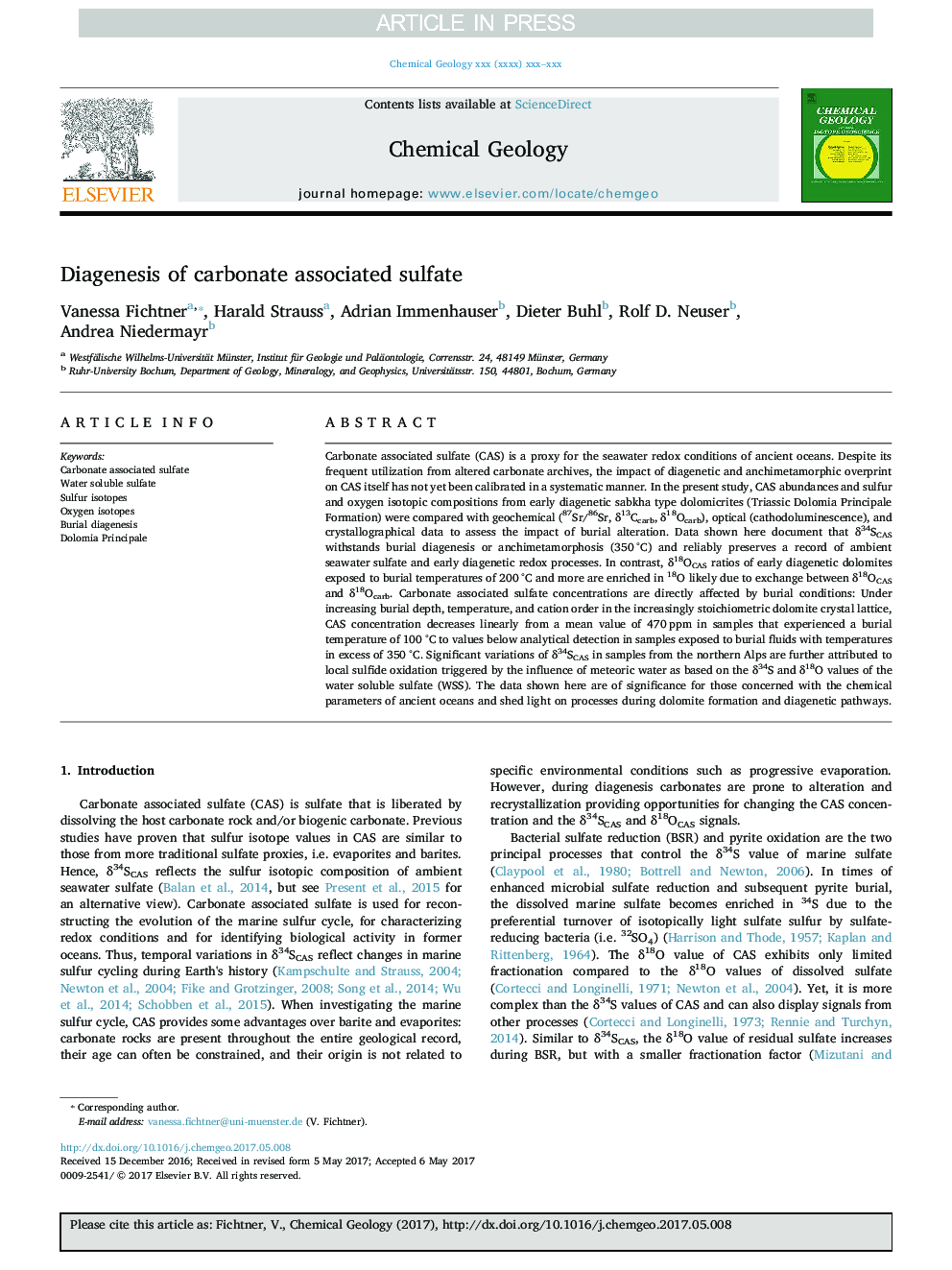| Article ID | Journal | Published Year | Pages | File Type |
|---|---|---|---|---|
| 5782615 | Chemical Geology | 2017 | 15 Pages |
Abstract
Carbonate associated sulfate (CAS) is a proxy for the seawater redox conditions of ancient oceans. Despite its frequent utilization from altered carbonate archives, the impact of diagenetic and anchimetamorphic overprint on CAS itself has not yet been calibrated in a systematic manner. In the present study, CAS abundances and sulfur and oxygen isotopic compositions from early diagenetic sabkha type dolomicrites (Triassic Dolomia Principale Formation) were compared with geochemical (87Sr/86Sr, δ13Ccarb, δ18Ocarb), optical (cathodoluminescence), and crystallographical data to assess the impact of burial alteration. Data shown here document that δ34SCAS withstands burial diagenesis or anchimetamorphosis (350 °C) and reliably preserves a record of ambient seawater sulfate and early diagenetic redox processes. In contrast, δ18OCAS ratios of early diagenetic dolomites exposed to burial temperatures of 200 °C and more are enriched in 18O likely due to exchange between δ18OCAS and δ18Ocarb. Carbonate associated sulfate concentrations are directly affected by burial conditions: Under increasing burial depth, temperature, and cation order in the increasingly stoichiometric dolomite crystal lattice, CAS concentration decreases linearly from a mean value of 470 ppm in samples that experienced a burial temperature of 100 °C to values below analytical detection in samples exposed to burial fluids with temperatures in excess of 350 °C. Significant variations of δ34SCAS in samples from the northern Alps are further attributed to local sulfide oxidation triggered by the influence of meteoric water as based on the δ34S and δ18O values of the water soluble sulfate (WSS). The data shown here are of significance for those concerned with the chemical parameters of ancient oceans and shed light on processes during dolomite formation and diagenetic pathways.
Related Topics
Physical Sciences and Engineering
Earth and Planetary Sciences
Geochemistry and Petrology
Authors
Vanessa Fichtner, Harald Strauss, Adrian Immenhauser, Dieter Buhl, Rolf D. Neuser, Andrea Niedermayr,
